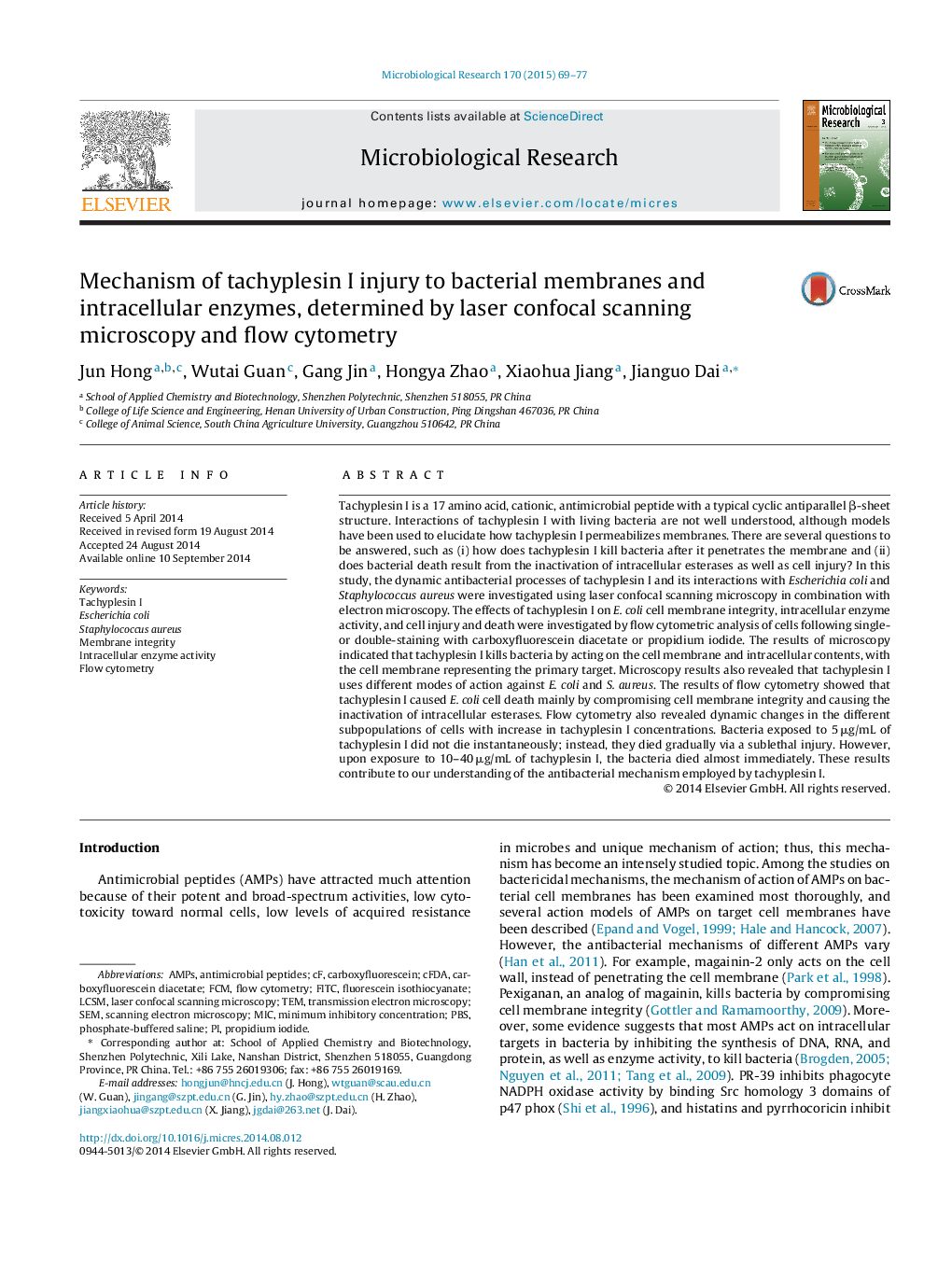| کد مقاله | کد نشریه | سال انتشار | مقاله انگلیسی | نسخه تمام متن |
|---|---|---|---|---|
| 2092124 | 1546002 | 2015 | 9 صفحه PDF | دانلود رایگان |
Tachyplesin I is a 17 amino acid, cationic, antimicrobial peptide with a typical cyclic antiparallel β-sheet structure. Interactions of tachyplesin I with living bacteria are not well understood, although models have been used to elucidate how tachyplesin I permeabilizes membranes. There are several questions to be answered, such as (i) how does tachyplesin I kill bacteria after it penetrates the membrane and (ii) does bacterial death result from the inactivation of intracellular esterases as well as cell injury? In this study, the dynamic antibacterial processes of tachyplesin I and its interactions with Escherichia coli and Staphylococcus aureus were investigated using laser confocal scanning microscopy in combination with electron microscopy. The effects of tachyplesin I on E. coli cell membrane integrity, intracellular enzyme activity, and cell injury and death were investigated by flow cytometric analysis of cells following single- or double-staining with carboxyfluorescein diacetate or propidium iodide. The results of microscopy indicated that tachyplesin I kills bacteria by acting on the cell membrane and intracellular contents, with the cell membrane representing the primary target. Microscopy results also revealed that tachyplesin I uses different modes of action against E. coli and S. aureus. The results of flow cytometry showed that tachyplesin I caused E. coli cell death mainly by compromising cell membrane integrity and causing the inactivation of intracellular esterases. Flow cytometry also revealed dynamic changes in the different subpopulations of cells with increase in tachyplesin I concentrations. Bacteria exposed to 5 μg/mL of tachyplesin I did not die instantaneously; instead, they died gradually via a sublethal injury. However, upon exposure to 10–40 μg/mL of tachyplesin I, the bacteria died almost immediately. These results contribute to our understanding of the antibacterial mechanism employed by tachyplesin I.
Journal: Microbiological Research - Volume 170, January 2015, Pages 69–77
